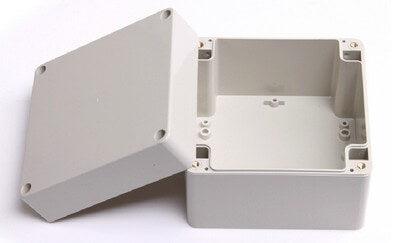Impact resistance is an important property for ABS (Acrylonitrile Butadiene Styrene) plastic parts used in demanding applications. ABS is intrinsically a tough and durable thermoplastic, but its impact strength can fluctuate based on composition, processing, and end-use factors. This article will examine the variables that affect ABS plastic’s resilience to impacts, along with methods to test and improve its impact resistance. With an understanding of how to enhance the impact toughness of ABS, engineers can produce plastic components that withstand bumps, shocks, and drops - even at temperature extremes.

What Influences the Impact Strength of ABS Plastics?
ABS is a common engineering thermoplastic valued for its strength, stiffness, and impact resistance. However, there are a few key factors that determine the relative toughness and impact strength of ABS plastic:
ABS Composition
Varying the ratios of Acrylonitrile, Butadiene rubber, and Styrene during production can modify the blend’s properties. Higher butadiene content improves impact resistance but reduces rigidity. The composition is optimized based on application requirements.
Temperature Resistance
The impact strength of ABS plastic significantly decreases at sub-zero temperatures. This becomes important for automotive, electronics, and appliance components that must withstand impact at freezing temperatures.
Molding Method
How the ABS is processed affects orientation and internal stresses. Proper injection molding, annealing, and machining protocols can maximize desirable impact strength qualities.
Fillers and Additives
Compounding ABS with other polymers or fortifying fillers like glass fibers and nanoclays can enhance impact resistance, especially at low temperatures.

Testing the Impact Toughness of ABS Plastic
To properly ascertain ABS plastic’s resilience, testing to industry standards using Izod or Charpy impact tests is recommended. Both use a pendulum to strike standard ABS test specimens and quantify impact energy absorption. Factors like notch type, striking hammer, and temperature are controlled. Validated lab testing unveils the true impact strength capabilities.
Improving the Impact Resistance of ABS Parts
When standard ABS plastic alone does not meet impact requirements, here are methods of modifying ABS to increase its toughness:
- Blending with polycarbonate or other polymers to produce ABS/PC or ABS plastics with wider temperature impact resistance.
- Adding reinforcing fillers like micronized rubber, glass/carbon fibers, or minerals to strengthen ABS plastic.
- Optimizing mechanical design features to dissipate impacts more effectively. Ribbing, bosses, and radii can improve impact resistance.
With customized ABS compositions and smart design, impact resilience can be augmented to meet demanding applications like:
- Automotive interior trims that withstand years of bumps and scrapes.
- Appliance and power tool housing that resists dings and drops during everyday consumer use.
- Protective wearables, sports gear, and cases that must absorb significant sudden impact while retaining dimensional stability.

ABS offers excellent innate impact toughness but Several factors like temperature, composition ratios, molding method, and design can influence the impact strength of ABS plastic parts. Proper testing and material modifications are key to enhancing ABS plastic’s impact resistance for challenging applications that require resilience against bumps, blows, and unintended collisions across a broad temperature range.







